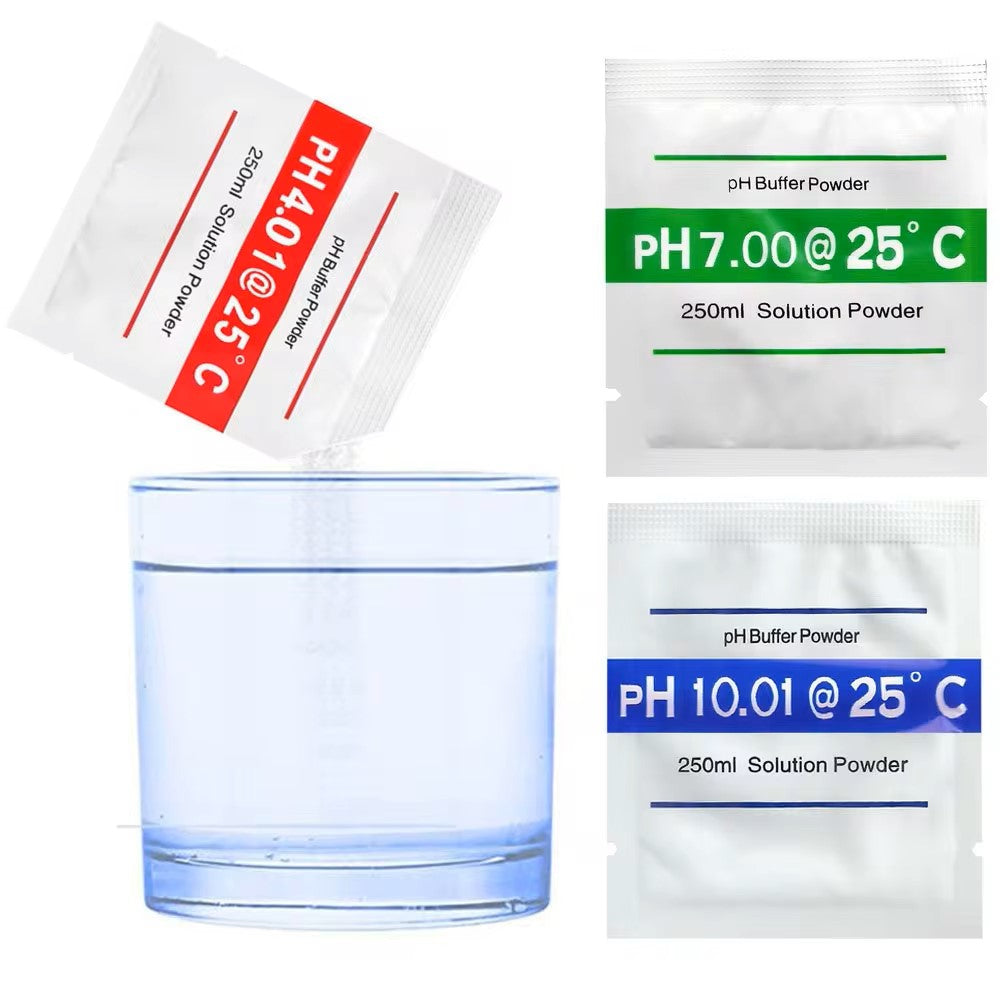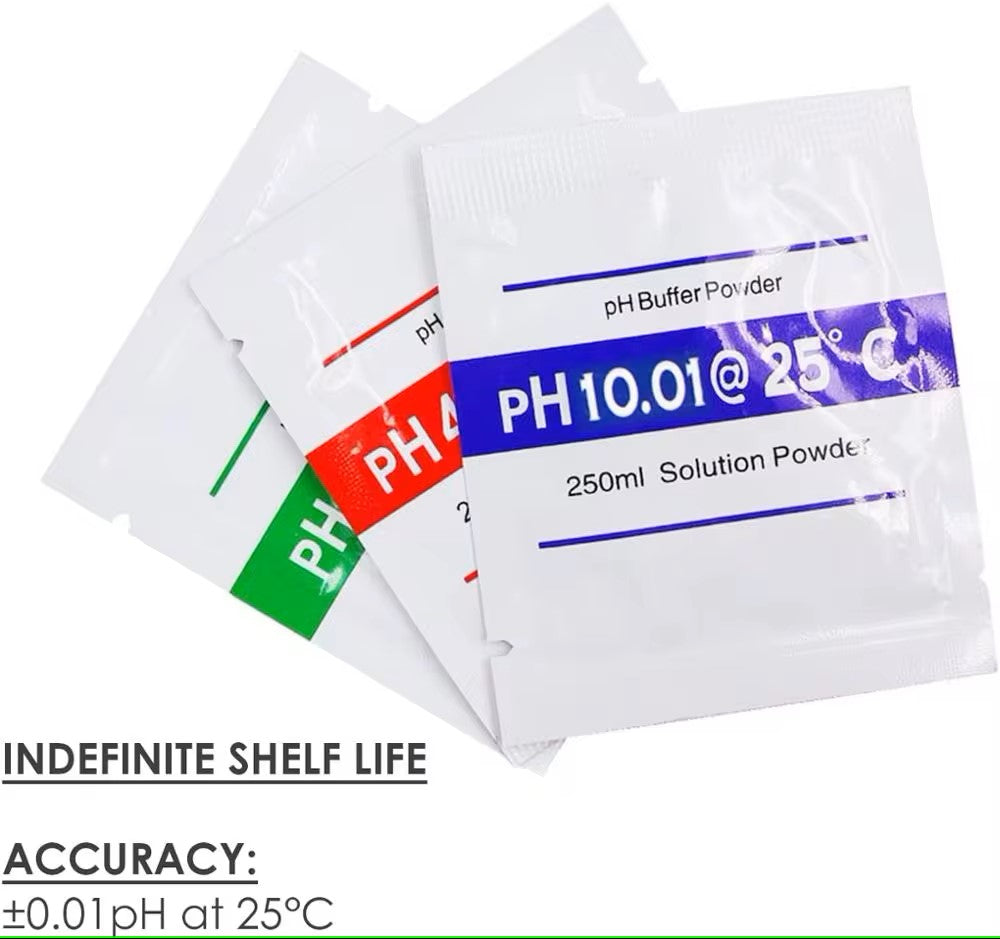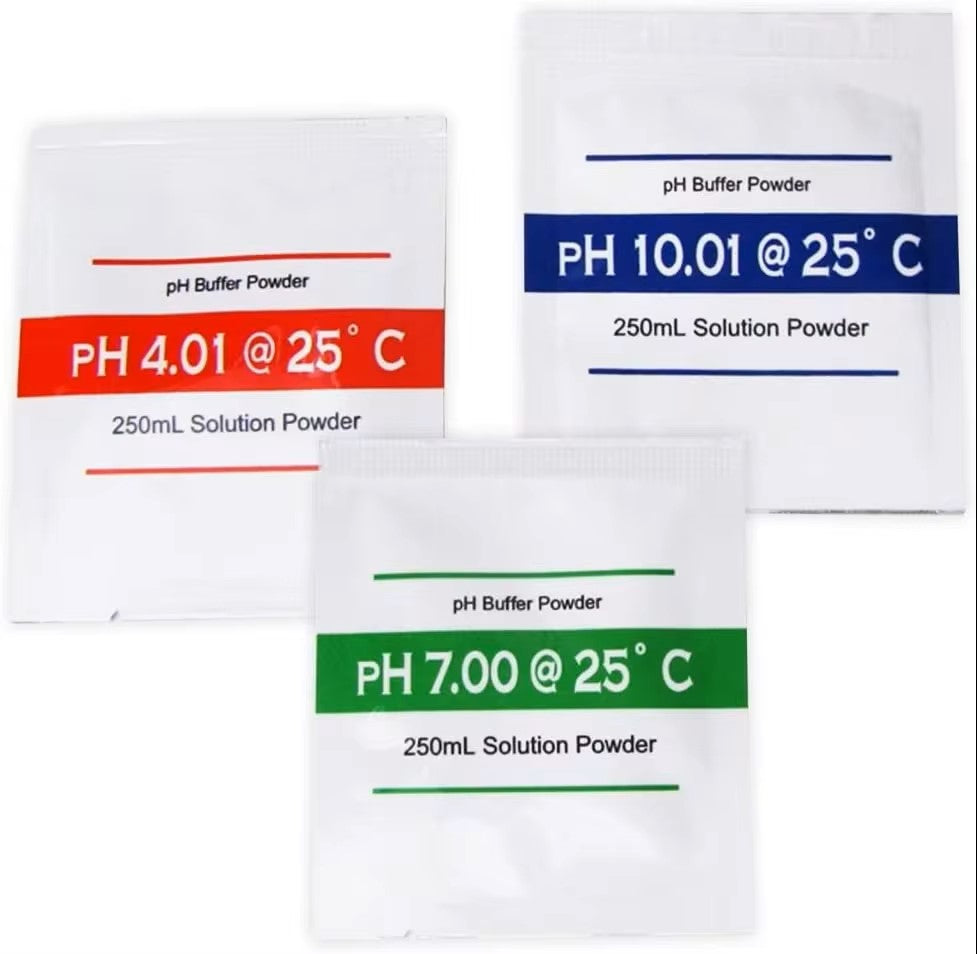Collection List
pH Calibration Buffer Solution Powder Kit (pH 4, 7 and 10)
SHARE
Stock
SKU:MCP-C-156-1
Order Product
Couldn't load pickup availability
Achieve precise pH measurements with our cost-effective calibration solution kit, containing pre-measured sachets to create 250ml solutions of pH 4.01, 7.00, and 10.01.
Accuracy : ±0.01pH at 25°C. Indefinite shelf life until mixed. Once mixed use within 12 months. Store out of direct sunlight at normal ambient temperatures.
Kit Contents:
- 1 x pH 4.01 sachet
- 1 x pH 7.00 sachet
- 1 x pH 10.01 sachet
pH Calibration Procedure
Important: Handle glass pH sensors with extreme care to avoid scratching or cracking.
1. Select Calibration Points:
-
Two-point calibration:
- FIRST POINT: Calibrate at pH 7
-
SECOND POINT
- Acidic applications: pH 4
- Alkaline (caustic) applications: pH 10
- Three-point calibration: Recommended if your application ranges from acidic to alkaline.
2. Solution Preparation:
- Empty one sachet into a clean container.
- Add 250ml of deionized or distilled water.
- Stir until the powder is completely dissolved.
3. Sensor Decontamination (if needed):
- Fats and oils: Gently clean with a soft toothbrush and warm detergent. Rinse thoroughly before calibrating.
- Mineral buildup: Soak in a warm citric acid solution. Repeat if necessary. After cleaning, soak in a pH 7 solution for approximately 1 hour to stabilize the sensor, then rinse well before calibrating.
4. Calibration Process:
- Rinse the sensor thoroughly before immersing it in calibration solution.
- Rinse again between different calibration points to avoid contaminating calibration results.
-
At each calibration point, allow the measurement to stabilize.
- New sensors usually take less than 1 minute.
- Settling times longer than 3 minutes often indicate a worn probe.
- Record "As Found" and "As Left" results. Record your measurements before and after applying any corrections. Maintaining good records helps you track sensor performance and determine appropriate calibration intervals.
5. Interpreting Results:
- Large zero offset: May indicate the sensors reference cell is degraded or contaminated/poisoned.
- Large slope degradation: Suggests a worn sensor.
- Long settling time: Also suggests a worn sensor.
- Erratic values: Suggests a broken/damaged sensor.
6. Further Tips
Start with frequent calibrations (say monthly) and adjust the intervals as you become familiar with your sensor's performance and rate of degradation.
Only 30~50 ml of solution is usually required to achieve a quality calibration. We recommend using calibration solution only once to avoid contaminating results.






